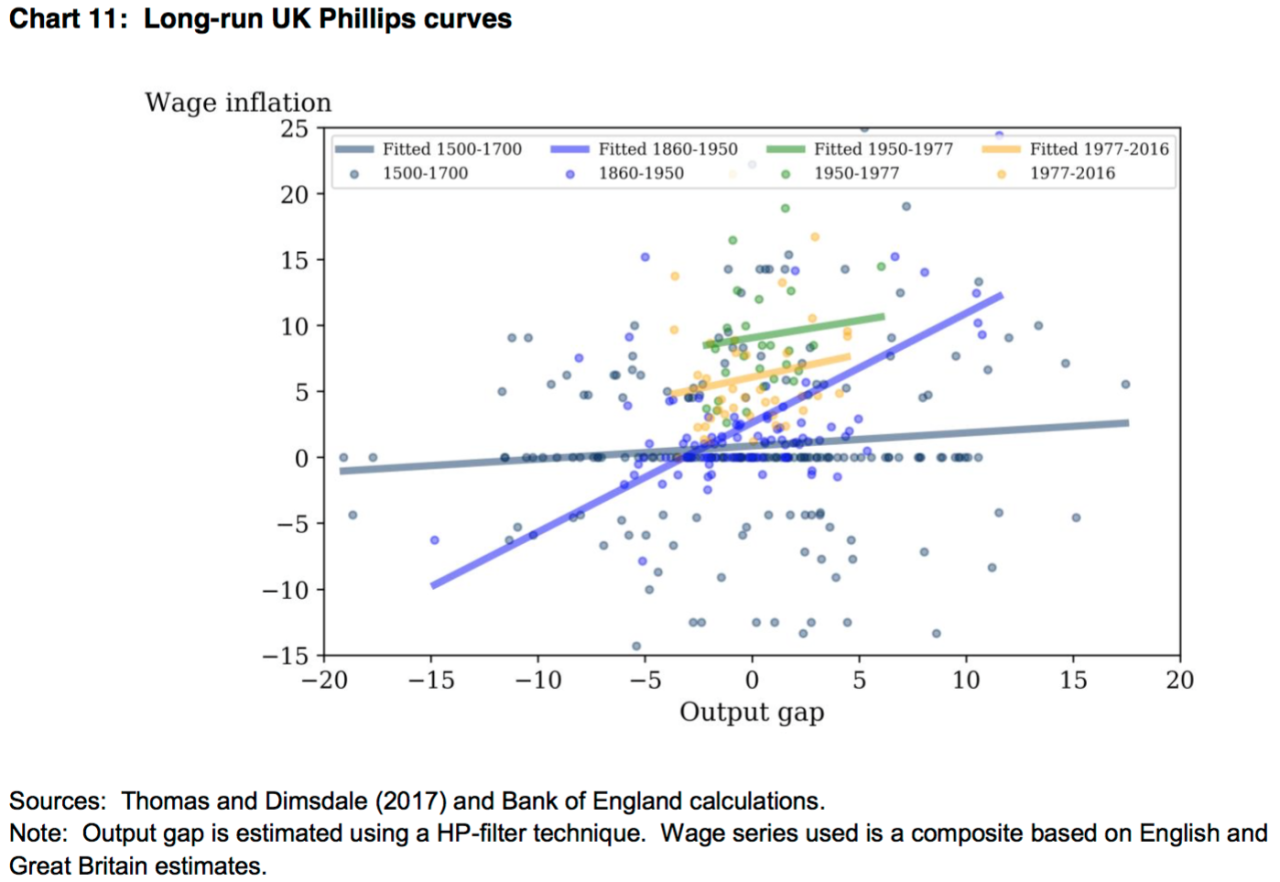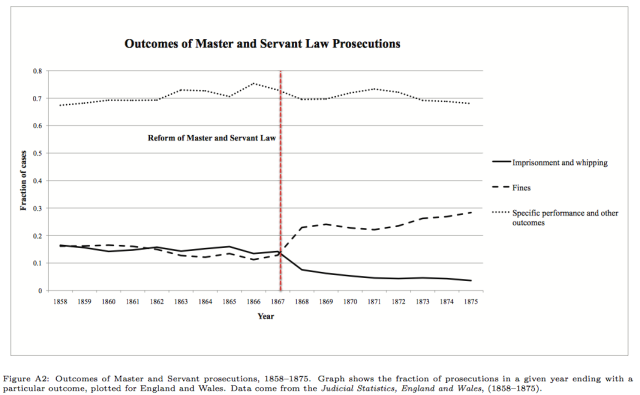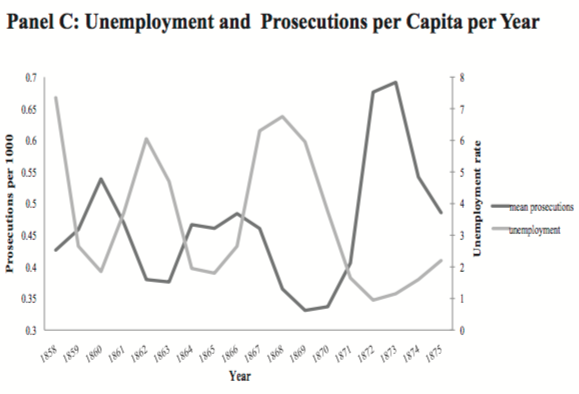Originally published at Flip Chart Fairy Tales
Andy Haldane’s speech in Bradford this week made headlines because of his comments about interest rates but what he said about stagnating wages is much more interesting.
He looked at the evolution of the Phillips curve, which shows the relationship between wage inflation and unemployment. In what we used to think of as normal times, if unemployment went up, wages fell. As demand for labour picked up, the reverse happened because employers had to pay more to attract people from a shrinking pool of labour. Worker bargaining power increased as unemployment fell and reduced as it rose.
At least, that’s what used to happen. As Mr Haldane said, somewhat mischievously:
Historically, there has been a reasonably strong and stable relationship between unemployment and wage growth – the so-called Phillips curve. As unemployment has fallen recently, this Phillips curve relationship would have led us to expect wage growth to pick up. That, plainly, has not happened. Over recent years, the Phillips curve relationship has been anything but strong and stable (Chart 3).

In the last couple of decades, and especially since the recession, the unemployment rate doesn’t seem to have had much impact on wages at all. Whatever else has happened, pay has stagnated.
Something similar, seems to have happened before the industrial revolution. The data we have available seem to indicate that there was a long period before the industrial revolution when there was little wage inflation and not much of a link between pay and unemployment. The Phillips curve for this period was also flat.
Chart 11 plots UK Phillips curves over three periods: 1500-1700 (pre-Industrial Revolution); 1860-1950 (post-Industrial Revolution); 1950-1977 and 1977 to date (post-war period). In each case, wage inflation is measured on the y-axis and an estimate of the output gap on the x-axis. In the post-war period, the Phillips curve conforms to type. Since 1950, it has a clearly positive slope (less slack in the economy is associated with higher wage inflation) and an intercept which is positive (reflecting positive trend inflation)
The post-Industrial Revolution Phillips curve has a conventional upward slope, similar to that operating after 1950. Higher growth or lower unemployment is associated with higher rates of wage and price inflation. The pre-Industrial Revolution Phillips curve is altogether different; it is as flat as a pancake. Indeed, it bears a close resemblance to the Phillips curves which have operated, in the UK and globally, since 2008.

Could we be seeing a return to the power imbalances of the pre-industrial period? The pattern of the last few years, says Mr Haldane, looks remarkably similar to that of pre-industrial Britain:
The move towards greater self-employment and less unionisation is, in some respects, a shift back to the future in the nature of work. Prior to the Industrial Revolution, and indeed for some years after it, most workers were self-employed or worked in small businesses. There were no unions. Hours were flexible, depending on what work was needed to collect the crops, milk the cows or put bread on the table. Work was artisanal, task-based, divisible.
While the read-across to work patterns in the 21st century is far from exact, there are some parallels. That being the case, one question is how wage- and price-setting behaviour operated during this earlier period of more “divisible” labour markets. Were any of today’s wage patterns evident then? The data we have on wages and output in earlier centuries are partial and imperfect, but nonetheless tell an interesting story.
The difficulty he identifies in comparing today’s work patterns with those of the 18th and 19th centuries may go some way to answering his question. As Simon Deakin said, employment contracts are a 20th century development. Our forebears would not have understood work relationships in the same terms. From the 16th century until 1875, employment was governed by master and servant law. The feudal idea that workers were bound to their masters was a long time dying.
In today’s language, probably the best way of understanding employment under master and servant law is as a series of fixed-term contracts. These could vary in length and often started and finished on quarter days. In theory, they gave a measure of security to workers who would at least know that they had a job until Michaelmas. In practice, as Professor Deakin explains, the courts often found that, while the worker was bound to the employer, the employer was not bound to provide work or wages:
The employer was found to have an implied right to lay off without wages, even in the case of an annual pit bond binding the workers to a year’s exclusive service. In this sense, long- service agreements effectively benefited only the employer; the worker was bound without having the protection of security of income or employment.
To make life that bit more difficult for the workers, they didn’t even have the same rights in court as their masters. As Paul Johnson points out:
A master sued by a worker could be a witness in his own defence, but until 1867 a worker prosecuted by an employer could not give any evidence on his own behalf.
But the power imbalance doesn’t stop there. Under master and servant law, workers were subject to criminal sanctions for breaches of their contracts while masters were only subject to the civil law. In cases of breaches of contract, workers had to pursue employers through the courts, while employers had the entire apparatus of criminal law enforcement at their disposal.
According to Professor Johnson, there were around 10,000 prosecutions a year for breach of contract in the mid-19th century. These were concentrated in the industrial areas so the likelihood of a worker knowing someone who had been brought before the court was high:
The annual chance of a working-class household suffering criminal prosecution for breach of labour contract lay between 1 in 150 and 1 in 200 – a sufficiently high rate for knowledge of the risk to be well known within working class communities.
And, of course, where contracts were for a fixed term, breach of contract could simply mean leaving your employer for another job. Suresh Naidu and Noam Yuchtman studied the master and servant prosecutions during the nineteenth century and found that most were brought for absconding.
The typical goal of a prosecution was to use the threat of incarceration and hard labor to prevent workers from leaving an employer, and to pursue and punish those who were not deterred.
The threat of prosecution was credible; not only were prosecutions common but they were also largely successful.
The use of the word absconding reflects the attitudes of the time. Workers were deemed to be bound to their masters. Those who tried to improve their wages by looking for work elsewhere could expect severe punishment, backed up by the criminal law.
The penalties could be harsh and, during the late 18th and early 19th centuries, the Master and Servant Acts became more punitive. Usually workers were ordered back to their masters or were forced to pay compensation but in some cases imprisonment and even beatings could be imposed. The law was reformed in 1867, replacing the more brutal punishments with fines. However, as most of these workers were poor, the effect of a fine may simply have meant that they later ended up in prison for being unable to pay it.

Chart by Suresh Naidu and Noam Yuchtman
Perhaps unsurprisingly, Naidu and Yuchtman also noticed a relationship between the level of unemployment and the incidence of prosecutions:
[P]rosecutions and the unemployment rate move in opposite directions throughout the period for which we have data.
They also found that, once master and servant law was abolished in 1875, wages rose fastest in the counties with the highest rate of prosecutions.
This, then, might account for the different shape of the Phillips curve after 1860. Once criminal sanctions were removed for workers who tried to seek employment elsewhere, the labour market outcomes began to reflect supply and demand more closely. The rise of trade unions, who played a major role in the campaign to abolish master and servant law, increased the bargaining power of labour.
To put it another way, it is likely that Phillips curve was held flat until the 1860s by draconian labour laws. It is difficult enough for workers of limited means to challenge their employers at the best of times but laws preventing them from giving evidence against their employers and imprisoning them for leaving their jobs made for a very lopsided balance of power. Any countervailing power that falling unemployment might have given to the workers could be neutralised by the criminal law. Servants who got above themselves could, quite literally, be captured and brought back. If we think there is an imbalance of power in the workplace now, it’s nothing compared to the mid 19th century. In those days, trying to get a pay rise was a very dangerous game.



“Populism”, as it is applied today, seems to me to be a pejorative term that deligitimizes the grievances of the economically disenfranchised and dismisses them with derision. Another categorization that I find less than apt, outmoded and a misnomer is the phrase “advanced economies”, especially given that gdp per capita and level of industrialization are the key metrics used to arrive at these classifications. Globalization has shifted most industrial activity away from countries that invested in rapid industrialization post WW2 to countries with extensive pools of readily exploitable labour, and gdp per capita numbers include sections of the population with no direct participation in creating economic output, and the growth of these marginalized sections is trending ever upward. Meanwhile, the financial benefits of growing gdp numbers continue to gush upwards to the financial-political elites instead of “trickling down” as we are told they should, inequality grows unabated, stress related diseases eat away at the bodies of otherwise young men and women…I’m not sure any of these dynamics, which describe perfectly what is happening in most so called advanced economies, are the mark of a society which should describe itself as “advanced”…
This comment belongs in the post about populism…apologies.
The penalties could be harsh and, during the late 18th and early 19th centuries, the Master and Servant Acts became more punitive.
Many complaints by Masters included allegations of theft, and the Courts favored the word of the Masters. the Counts’ expectation was would lie. At that time the punishment for a conviction of theft, or other money crimes, was transportation or death. There were no prisons for common people.
Transportation meany being shipped to a penal colony, such as Australia. Conditions on such transport was little better than the slave carriers.
On the other hand, if you survived the voyage, you could possibly escape the class system and get a fresh start.
In Oz?
Different form of individual persecution.
Have you read up on the early days of Australia?
First, being sent so far was like going to the moon. And Australia was about as barren and hostile as the moon.
Second, not all the people being transported were for political crimes. Most were thieves, admittedly petty crimes, but also some real thugs. Many Australians amusingly try to distance themselves from that and point out an ancestor who was an administrator rather than someone who was transported.
You’re right about the criminals, but the coastal areas of Oz aren’t barren, neither are the northern more tropical parts. America of course was a better deal… and many were also transported there.
I have to disagree Yves.
As an Australian I know that most Australians like to identify some lineage to the convict class. The early administrators were drawn from the despised Rum Corp, although a sprinkling were like Governor Philip and Arthur who were true benefactors to the early Australia. Don’t forget that people like Bligh were administrators and who would want to claim him in their heritage?
The popular view that Australia was barren and unproductive is also a myth as early settlements were in the lush grasslands surrounding Sydney and Melbourne. Enough to support grazing which created the sheep industry, but the difficulty the new Australians experienced were the seasonal variations with Europe and varying patterns of rainfall, so cropping presented some steep learning curves. The English plants and seeds also failed until varieties better suited to the climate were sourced.
In Hughe’s tome “Australia” he examined the types of convicts transported to Australia and in fact, the majority were for petty crimes like theft of handkerchiefs, food, bankrupcy or embezzelment. Because of the high conviction rate caused by a starving lower class these prisoners were kept on hulks in the Thames which became overcrowded- they were not kept in with the hardcore populations. Any hard core were executed in the old country and political prisoners were sent to Port Arthur or Norfolk Island. Both men and women were transported to Australia and most earned a ticket of leave after a couple of years and became respected families in their communities with many marrying into so called free settlers.
I hope this clarifies the real facts. To many starving lower class being transported was a blessing if they survived the voyage, but to the well heeled administrators it was a jolt to be in a far flung place beyond their creature comforts.
South Australia was different in that only non-convicts were permitted to settle. The
wine industry started there too.
“Conditions on such transport was little better than the slave carriers.”
Actually convict ships were by far the better deal trip-wise. The convicts were fed and looked after so as to be healthy when they arrived, so immediately useful. The crap ships were the private carriers of “free settlers”. Many, many more died on the way out.
Excellent post on a surprisingly poorly recognized subject. It’s particularly important now, in this period of social regression, to recall the past travails of not so free labor. Non-compete clauses and judicially-imposed labor service are currently in capital’s armory. This reminds us of a past that the future could repeat.
I don’t have the exact quote at hand, but IIRC in The Wealth of Nations Adam Smith says “Combinations of owners to reduce wages are everywhere, combinations of workers to increase wages are everywhere suppressed.”
Not in those exact words, that I can find, but Book 1, Chapter 8 examines that Idea from about every angle possible, and agrees.
A friend who’s done some research on master-servant law commented, and nb the last sentence:
This is for the UK, which was always a barbarous place (e.g., the death penalty for the theft of a handkerchief). What was it like on the Continent?
I’m not a professional economist, but almost every time I see a “Phillips Curve”, I’m reminded how badly understood it is and how poorly economics performs as a scientific discipline. This area needs a complete rethink. This article above is not that rethink, though I great appreciated the discussion about the perilous state of workers’ rights prior to the 20th century.
There is a Phillips Curve but it’s probably not what you think. For the U.S. at least, there’s empirical evidence that the true relationship is between unemployment and subsequent REAL wage inflation (not nominal). Even here one must be careful, for the link is not that strong. And real wage growth could also be productivity-related… but productivity growth itself might also be a function of labor scarcity. When a population desires to get more work done with fewer hands, innovation favors productivity.
For some charts showing various examples of valid and invalid “Phillips Curves”, including a persuasive graph of the unemployment/real wage inflation curve, see these links:
http://www.hussmanfunds.com/wmc/wmc110404.htm
http://www.hussman.net/wmc/wmc131104.htm
Phillips curve-skills shortages?
Well, this is a very interesting topic to me, but I’d like more meat behind the labor rate statistic used. And regardless, there has been so much slack in the labor force, that even with labor rates dropping there still may be plenty of people available re-entering the workforce and now finding jobs. So it may not be the closed system assumed in the recent past.
Separately, my company has taken to hiring lots of college grads during this upturn, reducing the age/experience of the labor force. Again an open system phenomenon, not the assumed closed system from before. Younger workers 3-10 years experience are always taken advantage of compensation wise relative to their productivity in corporations.
It almost looks like we are moving back to the Master/Servant system at least where enforcement of the law is concerned.
Look at how many people were prosecuted for the Financial crisis (0) vs. how many people lost their houses, based on what may have been false information provided by the Master’s of the universe.
Serfin USA.
Is the B-Side Back in the USSR?
Naw, it is an album which also has on it “Work Around The Clock”.
Also of interest I hope, “Why NAIRU is zOMG hyperinflation” https://www.concertedaction.com/2017/02/19/why-nairu-is-zomg-hyperinflation/